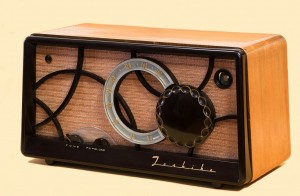The older I get the more I realize that I need a network of people, agencies and institutions to get me through life in an imperfect world. Yet the give and take of networking that is so often messy and uncomfortable, remains essential.
Recently it happened again. I needed help. Help was available…eventually!
As I turned off the highway toward my evening appointment I noticed the temperature gauge in my car was registering on the high side of the dial. My routine service appointment earlier that day had told me everything checked out fine. Just as I determined to turn around my temperature light turned a bright red. A few minutes later I was parked on an access ramp ready for my network to kick in with much needed assistance.
Since I pay for a previously unused membership in a roadside assistance program, I started my networking there. While the phone was still ringing three Good Samaritans and one police officer spontaneously joined my network. Unfortunately all they could do was confirm my diagnosis of an apparently ruptured radiator hose. They helped me push the car to a safer location on the highway shoulder. By this time I was in touch with my official network for roadside assistance, but one of the helpful strangers insisted on staying until help was on its way.
Networking became messy at this point. I touched the right buttons and responded to the verbal prompts to reach a real, live person to arrange my needed assistance.
After he determined that no one was in a life threatening situation we started our networking. “My car has overheated and I have an obvious radiator problem”, I explained. “Can you help me arrange for a tow truck?”
“I’m sorry you’ve had a problem. What kind of car are you driving?”
“It’s a small Oldsmobile. Can you help arrange towing?”
“Now what color is your car?”
At this point I was puzzled. How can the color of my vehicle be mission-critical to getting it towed to the garage?
The networking became even more difficult when I had to verify my location. Apparently the information form being completed on the other end of my call asked for landmarks and a visual description, along with the street location I had already given.
As we confirmed other details he kept coming back to the need for a landmark to pinpoint my location. It probably didn’t help that I responded in frustration “I’m at the intersection of US 60 and Missouri 25 near Dexter, Missouri just where the police car is driving away.”
Despite my obvious frustration and his obvious obligation to provide a complete description of location, help did arrive in a timely manner. The messy business of networking seemed a lot more worthwhile once the car was loaded up for delivery to the repair shop.
Networking within the church often becomes messy, too. It happens on the local level with competing preferences for programming and space. It happens on the national and international level with an almost endless list of concerns, missed opportunities or failures in communication.
I believe, however, that networking can be less messy if we follow 3 basic principles included in the Bible.
1. Talk with not about people. Jesus advises that when networking goes awry the first response should be to talk to the people involved (see Matthew 18:15).
2. Be realistic in expectations. Everyone cannot do everything. It seemed to me that my roadside assistance was taking entirely too long until I looked back to realize that my tow truck was on its way within about 20 minutes of my call and that it arrived on schedule.
3. Be patient with your network. Mind reading has become a lost art among denominational officials. Information flow to them often is very, very delayed. This often postpones the start of the response time. Generally, however, once the response process begins it proceeds rapidly.
Networking really is messy business. The more I network, however, the more I realize that a network can do together what could never be done alone.
How well does your network function? What steps do you take to insure your networking is optimized? Click on ‘Leave A Comment’ at the top of this article to join the discussion!


